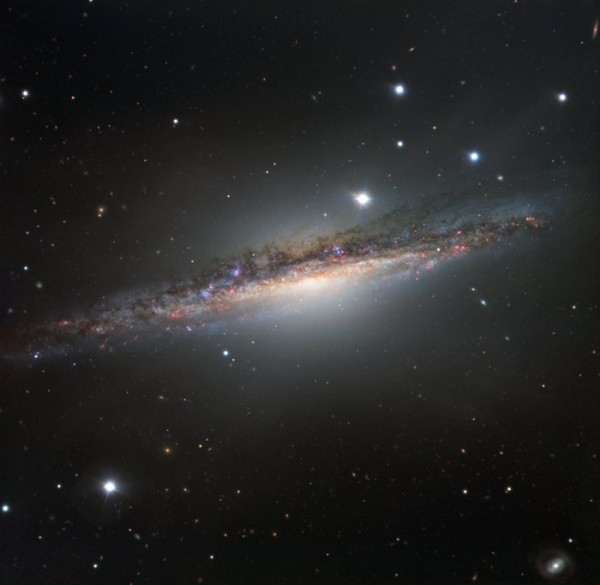By Ana Verayo, | March 06, 2017

This colourful image from ESO’s Very Large Telescope shows NGC 1055 in the constellation of Cetus (The Sea Monster). (ESO)
Astronomers have released a stunning, new image of a massive spiral galaxy revealing never-before-seen details of the stellar system from its edges. This majestic galaxy is known as NGC 1055 which is located around 55 million years away from Earth.
This recent images captured by the European Southern Observatory's (ESO) Very Large Telescope reveals this distant spiral galaxy and its colorful galactic arms. This new image was taken by the VLT's Focal Reducer and Low Dispersion Spectrograph 2 instrument in ESO's Paranal Observatory in Chile. With endless trails of gas and cosmic dust, these spiraling galactic arms enshroud the brightest stars in the universe in the constellation Cetus.
Like Us on Facebook
New observations have revealed that the galaxy NGC 1055 is bigger than the Milky Way galaxy by around 15 percent. For comparison, the Milky Way galaxy is measured around 100,000 light years across. The Milky Way galaxy is also considered a spiral galaxy, however, if captured from its edges, our home galaxy will appear flat since Earth's orientation is different when captured from the edges of the Milky Way.
This new image reveals a remarkable 3D view of NGC 1055's shape and formation. According to ESO astronomers, edge-on, we see the NGC 1055 with all its stars. This includes new stars in patches that appear like a stellar nursery and older star populations which have been distributed across the galaxy.
The height of this flat disc and its core filled with star populations has become easier to measure thanks to this 3D view. Astronomers describe how stellar material have been extended away from the extremely bright stars and the galactic plane. This also means that the galaxy becomes more illuminated and observable against the dark void of the universe.
With this new edge-on view, astronomers also discovered some warping of this new image of NGC 1055, as its disc bends and twists all across from its core. This distinct structure was apparently shaped by forces from a nearby galaxy known as Messier 77. ESO officials described how the gravitational forces from neighboring galaxies could distort the overall form of a galaxy when two galaxies' stars, gas, and dust eventually merge in a span of millions of years.
-
Use of Coronavirus Pandemic Drones Raises Privacy Concerns: Drones Spread Fear, Local Officials Say

-
Coronavirus Hampers The Delivery Of Lockheed Martin F-35 Stealth Fighters For 2020

-
Instagram Speeds Up Plans to Add Account Memorialization Feature Due to COVID-19 Deaths

-
NASA: Perseverance Plans to Bring 'Mars Rock' to Earth in 2031

-
600 Dead And 3,000 In The Hospital as Iranians Believed Drinking High-Concentrations of Alcohol Can Cure The Coronavirus

-
600 Dead And 3,000 In The Hospital as Iranians Believed Drinking High-Concentrations of Alcohol Can Cure The Coronavirus

-
COVID-19: Doctors, Nurses Use Virtual Reality to Learn New Skills in Treating Coronavirus Patients







